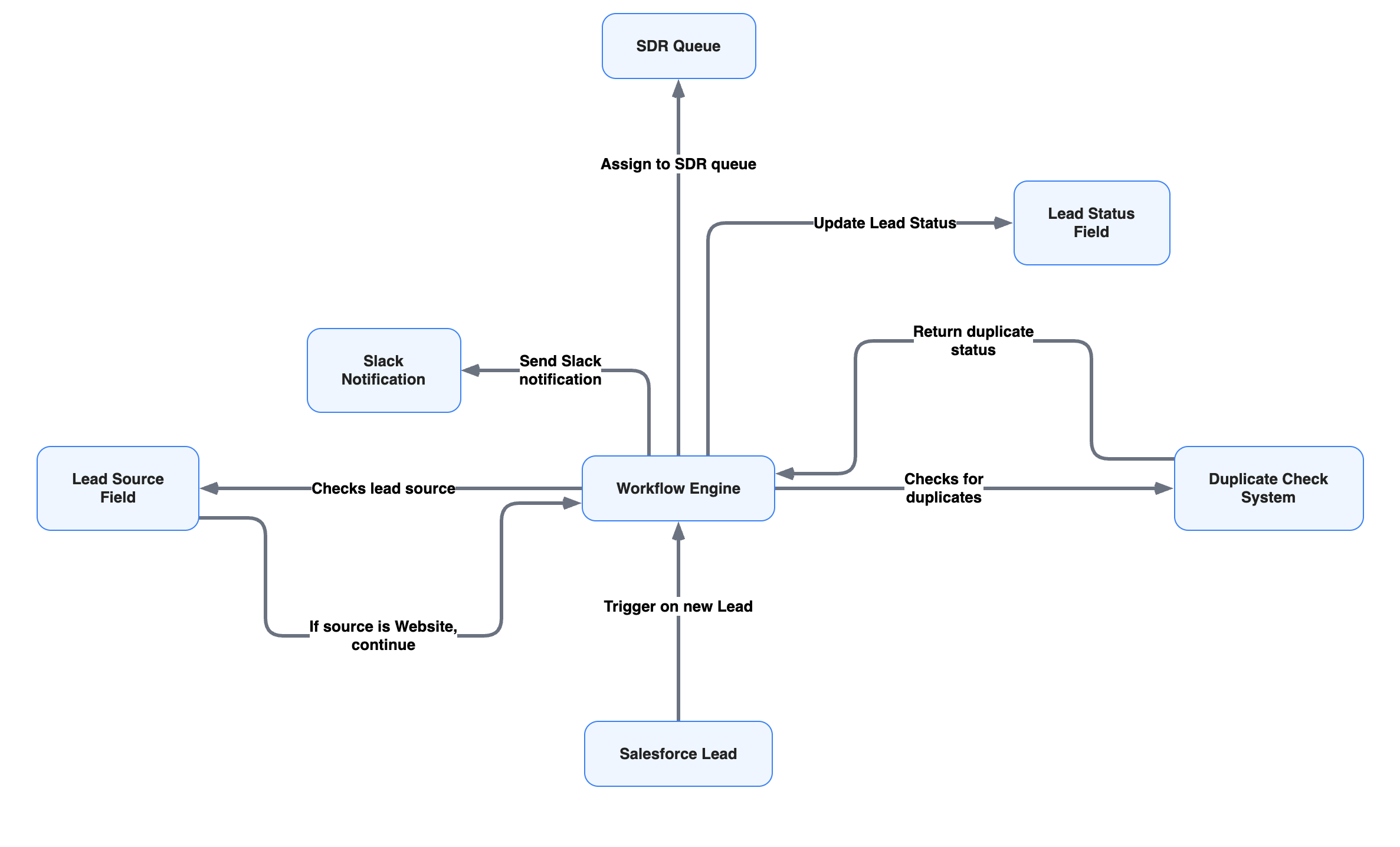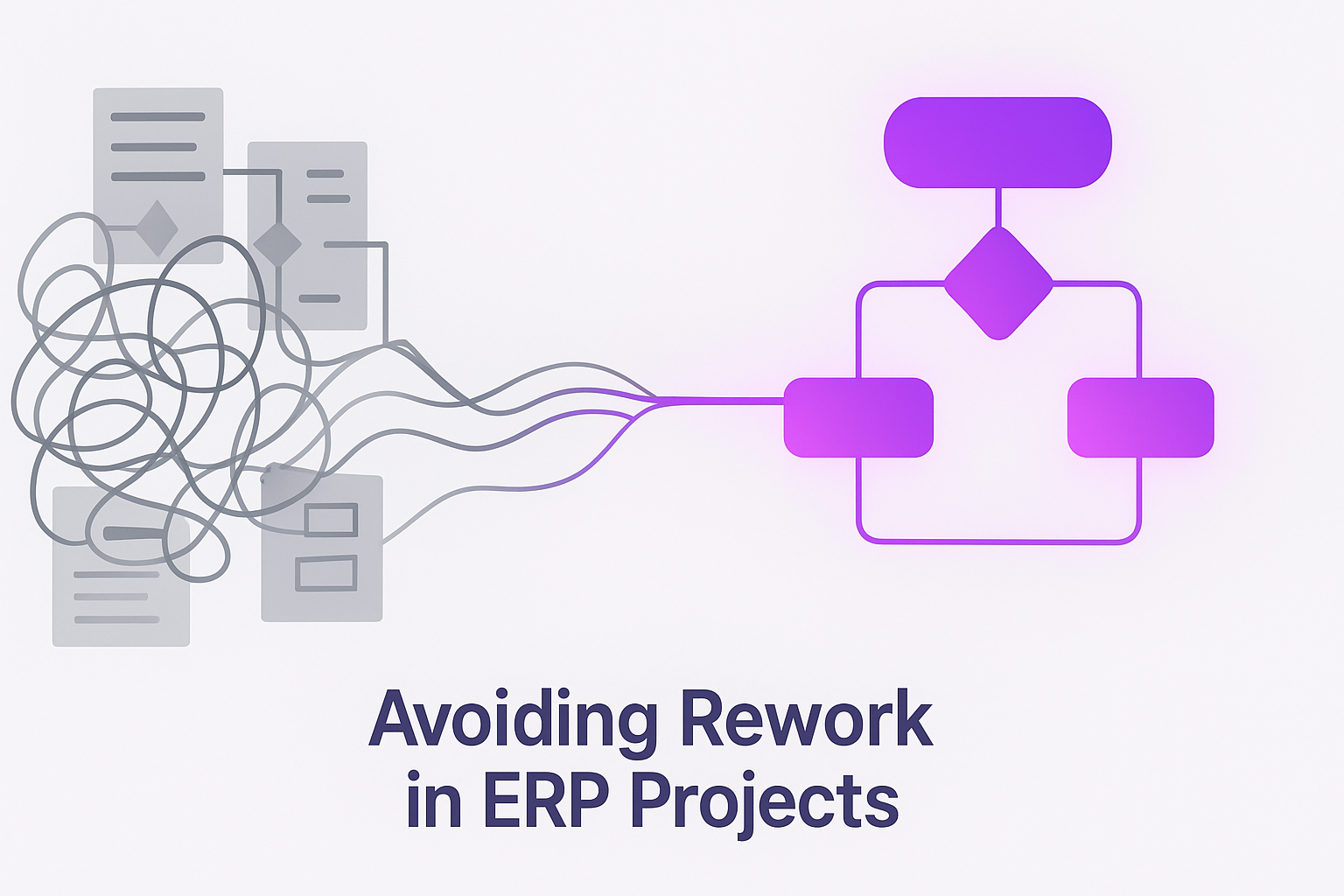ERP and CRM implementations are famous for budget overruns. But if you ask experienced consultants why projects slip, you’ll rarely hear “the code didn’t work.” More often, the story is: the requirements weren’t clear, the documentation didn’t match reality, and everyone thought they were building the same thing, until they weren’t.
That gap between expectation and delivery is where rework happens. And it’s costly. Research shows nearly half of ERP implementations (48%) run over budget due to scope changes and rework, while the Project Management Institute attributes up to 70% of rework to misunderstood requirements. Every time teams redo work, momentum stalls, trust erodes, and budgets bleed.
But here’s the opportunity: rework is not inevitable. The firms that beat it aren’t luckier or smarter, they work visually.
TLDR: Implementation firms face costly ERP and CRM rework. Discover how visual specs help NetSuite, Salesforce, and Dynamics projects stay aligned, cut overruns, and deliver faster results. Ideal for consultants and solution architects driving ERP success.
Why Traditional Specs Fail Fast
For years, consultants have leaned on static deliverables; Visio swimlanes, Word docs, maybe a Confluence page. Tim, a veteran of 40 years in services, put it bluntly: “Swimlanes are what we use most often. Every doc has them. But they’re static. Six months later they’re useless.”
Danielle, who runs a NetSuite-focused consultancy, sees it every week: “The system and the documentation gets stale very quickly and no one is updating that. NetSuite has spent a lot of time documenting their out-of-the-box flows, but the nuances, the customizations that matter aren’t captured. You could build a big business just on showing the differences between the standard and the actual reality.”
That’s the trap. Documentation looks complete when delivered, but it ages instantly. Every change introduces drift, and drift is where misalignment grows. By the time developers are building, they’re often working from a picture that no longer matches the system.
The Rework Tax Hiding in Plain Sight
The cost of these misalignments is staggering. IBM found that fixing an issue after go-live costs up to 100x more than fixing it during design. Danielle estimates the cost another way: “A NetSuite architect is $300 an hour. Updating stale documentation is a poor use of that time. I want my architects doing the dev work, not redrawing Visio diagrams.”
Multiply that across a six-month NetSuite optimization, or a Salesforce org consolidation, and the numbers add up quickly. Even modest rework rates (10–15%) can chew up $50K–$75K on a $500K project, dollars spent not on new features, but on redoing old ones.
Yet practitioners also point out that rework isn’t just about cost; it’s about scoping accuracy. As Tim explained: “The visual speaks louder than the words. That node is $20K, that one is $50K. If I had the visual up front, I can scope it spot on.” Clear visuals prevent underestimates, which in turn prevent late-stage renegotiations with clients.
Visual Specs as the New Standard
The solution isn’t more documentation; it’s better documentation. Visual specs aren’t static artifacts; they’re living, linked diagrams tied directly to the system. They bring together:
- Flows that map current state in real time
- Branching logic spelled out explicitly
- Annotations and swimlanes to capture roles, ownership, and exceptions
- Links to live system objects and code, so specs don’t drift away from reality
As Robert, a sales leader, described it: “What we need is a living, breathing source of truth that captures the current state, the timeline, and the success criteria. Right now, it doesn’t exist.”
With visual specs, it does.

How We Make It Practical
Splotch was designed around this exact problem: turning reverse-engineered spaghetti into clean, shared diagrams that don’t go stale. With Splotch:
- Code Mapping: show the full NetSuite or Salesforce instance, instantly mapped.
- Sourcing: trace workflows step by step, linked to the underlying code.
- Docs Plug-in: generate diagrams with exportable, branded specs from your documents
- Collaboration: you can comment in real-time, reducing the need for endless stakeholder meetings.
Instead of siloed diagrams in Visio, Splotch delivers a living spec that evolves with the system. Danielle summed up the payoff: “If we had the visual up front, I could show the customer exactly what each role, each change, each cost entails. I see the same thing they do. No surprises.”
From Rework to Right-First-Time
Here’s the opportunity: firms that adopt visual specs can flip the narrative. Instead of being reactive, fixing issues after UAT or go-live, they can be proactive, aligning everyone on day one. That means:
- Less rework, because misunderstandings surface early
- More accurate estimates, reducing budget tension
- Faster cycles, because stakeholders review diagrams, not 20-page docs
- Stronger client trust, because the deliverables stay relevant long after go-live
As one consultant put it during testing: “This is insanely valuable. If you can show the current state, the ideal solution, and the impact of that solution, show them the difference, you’ll win every time.”
Rework is the tax of unclear specs. Visual specs are the way to avoid it.
Try Splotch today and make every NetSuite, Salesforce, or Dynamics project run right the first time. If you want a demo, reach out, we're happy to help.
